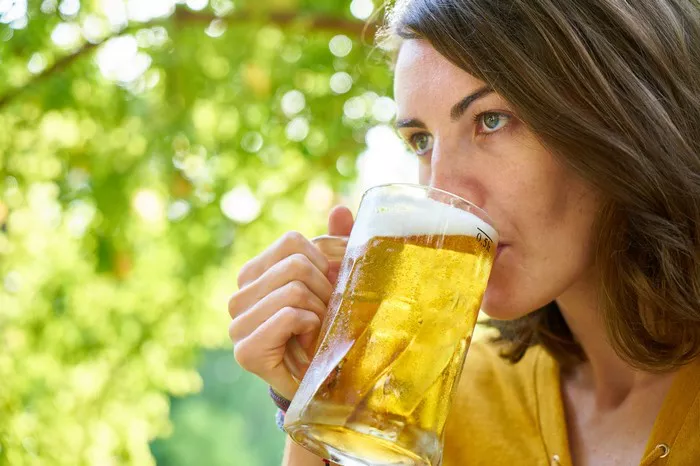Beer, a beloved beverage enjoyed across cultures and continents, is often characterized by its distinct bitter taste. Why is beer so bitter, you might wonder? The bitterness in beer is a result of various factors, including ingredients, brewing techniques, and the interaction of specific compounds during the brewing process. Exploring the science behind this bitterness unveils a fascinating journey that contributes to the complexity and diversity of beer flavors.
Understanding Bitterness: The Role of Hops
Hops, one of the key ingredients in beer, play a pivotal role in imparting bitterness. These cone-shaped flowers, derived from the Humulus lupulus plant, contain alpha acids, particularly humulone and cohumulone, which contribute to the beer’s bitter profile. During the brewing process, hops are added at different stages, primarily during boiling, to extract these alpha acids. Why is beer so bitter? This bitterness serves as a balance to the sweetness of malt, providing depth and complexity to the overall flavor profile.
Varieties of Hops and Bitterness Levels
The diversity of hops available to brewers significantly impacts the bitterness of beer. Various hop varieties possess different levels of alpha acids, essential oils, and flavors, influencing the final taste of the brew. For instance, hops such as Magnum and Chinook are known for their higher alpha acid content, contributing a more pronounced bitterness. Brewers carefully select hop varieties and adjust quantities to achieve desired bitterness levels and unique flavor profiles in their beers.
The Impact of Brewing Techniques on Bitterness
Brewing techniques also contribute to the bitterness of beer. The duration and temperature of hop boiling, known as the “hop boil,” affect the extraction of alpha acids. Prolonged boiling can result in increased bitterness, while shorter boil times or late additions of hops can preserve more delicate hop aromas and flavors without overwhelming bitterness. Understanding the interplay between brewing duration and temperature is crucial in controlling the bitterness of the final product.
Water Chemistry and Bitterness Perception
Surprisingly, water chemistry significantly influences the perception of bitterness in beer. Breweries meticulously adjust the mineral composition of water to achieve desired flavors. High sulfate levels, for instance, enhance hop bitterness perception, while chloride ions can accentuate malt sweetness and balance the overall taste. The intricate balance of minerals in brewing water is an often overlooked yet critical aspect in shaping the beer’s bitterness.
Yeast and Bitterness: Unraveling the Role
While hops predominantly contribute to beer bitterness, yeast strains also play a subtle role in shaping this characteristic. Some yeast strains produce compounds during fermentation that can either enhance or mask bitterness. Moreover, the fermentation temperature and duration can influence the yeast’s impact on the final bitterness of the beer. Understanding yeast behavior aids brewers in fine-tuning bitterness alongside other flavor components.
Bitterness Units: Measuring Beer’s Bitterness
To quantify bitterness in beer, brewers use the International Bitterness Units (IBU) scale. Why is beer so bitter according to IBU? This scale measures the concentration of iso-alpha acids, providing a standardized way to gauge a beer’s bitterness. However, it’s essential to note that perceived bitterness can vary based on individual taste sensitivity, beer style, and the interaction of other flavors.
Balancing Act: Bitterness and Beer Styles
Different beer styles showcase varying levels of bitterness. While some styles, like India Pale Ales (IPAs), are renowned for their bold bitterness, others, such as stouts and wheat beers, maintain a more subdued bitterness. Achieving the right balance between bitterness, sweetness, and other flavor elements is a craft mastered by skilled brewers, defining the uniqueness of each beer style.
Consumer Preferences and the Evolution of Bitterness
Consumer preferences have played a pivotal role in shaping the evolution of bitterness in beer. With the rise of craft breweries and a growing appreciation for diverse flavor profiles, consumers have embraced both intensely bitter and more subtly hopped beers. This evolution reflects the dynamic nature of the brewing industry, where experimentation and innovation continuously redefine the boundaries of beer bitterness.
Conclusion
In summary, the bitterness in beer is a multi-faceted aspect influenced by hops, brewing techniques, water chemistry, yeast, and consumer preferences. Why is beer so bitter? The interplay of these factors contributes to the complexity and diversity of beer flavors, showcasing the artistry and science behind brewing. Understanding the intricate balance of bitterness in beer allows brewers to craft an array of distinct and delightful brews, appealing to a wide spectrum of tastes and preferences.


